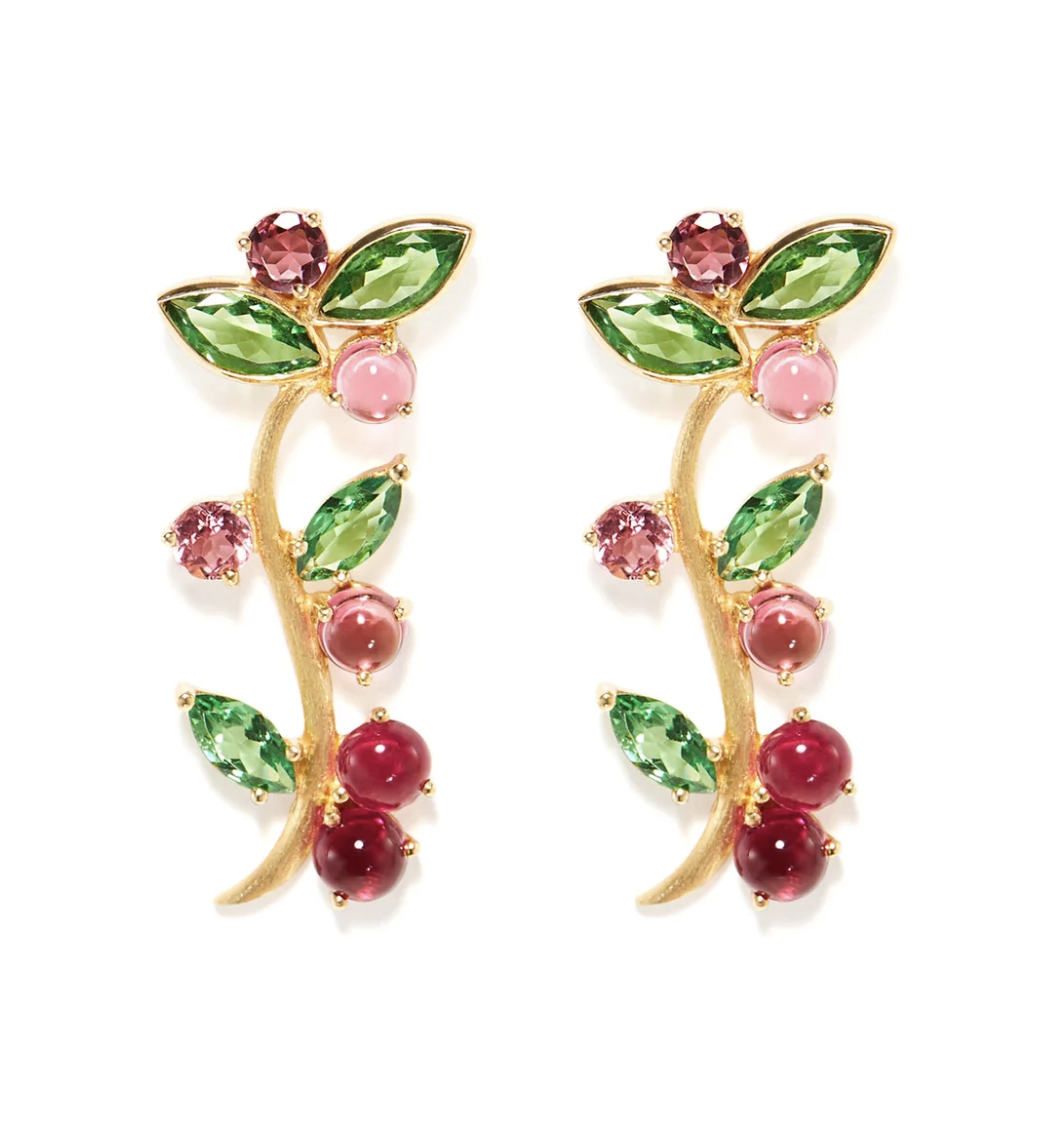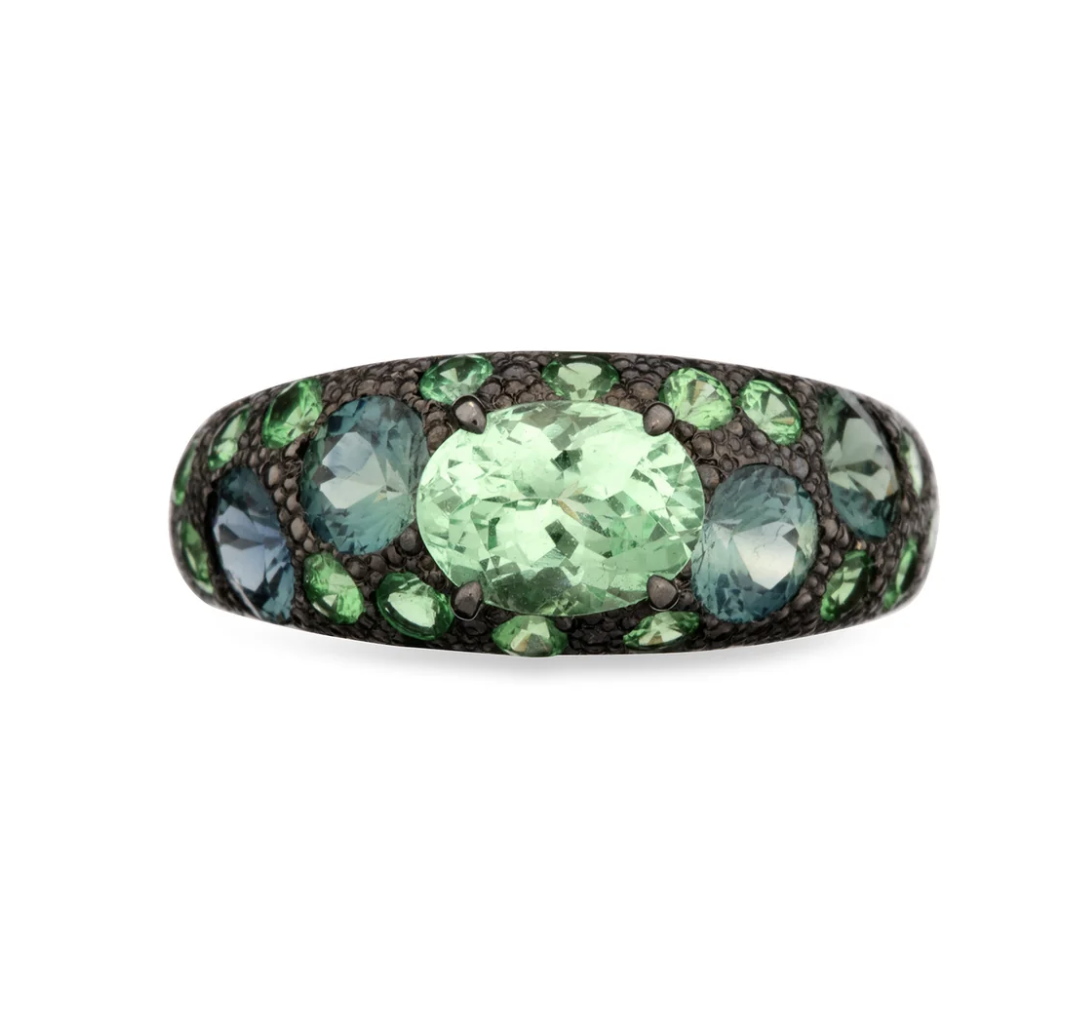The untamed beauty of tsavorite garnets
Only discovered in the 1960s, this rare green gemstone is a tougher and more affordable alternative to emerald, and as such its stock is rising.
By Rachael Taylor
When we think of gems, we imagine ancient stones that have been in circulation for millennia, set into jewels and crowns of civilisations long lost. Yet this is not true of all gems. Gemmology is a constantly evolving field, and some of the newer discoveries are the most exciting – such as tsavorite garnet.
Though the best-known garnets are deep red, garnets can now be found in a variety of hues including orange, purple and – rarest of all – green. Green garnets are known as tsavorite garnets, named in homage to Tsavo National Park in Kenya near the border with Tanzania. It was here that a rich deposit of the green gems was discovered in the late 1960s by geologist Campbell Bridges, the same man who first found tanzanite.
Since their discovery, tsavorite garnets have delighted the high jewellery world. In 1974, Tiffany & Co ran an advert in The New York Times introducing its customers to tsavorite. It told the adventurous tale of the gem’s discovery, with a picture of Campbell and a giraffe in situ in Kenya. To describe this new gem, the ad said it was “far more durable and far less expensive than emeralds”.
A loose 2.04ct oval-cut tsavorite garnet, available at Eva Gems & Jewels.
Emerald versus tsavorite garnet
With a vivid, clean green colour that required no treatment, it was little surprise that this stone was soon being compared to the famous emerald. And some gem experts, including Eva Gems & Jewels founder Eva Meijer, believe it to be a superior stone.
“This is almost sacrilegious to say out loud, but it’s very true from a gemmological point of view,” says Eva, who describes tsavorites as one of her favourite stones due to their natural vivid colour. “Tsavorite has a higher refraction index and nearly double the dispersion of emerald. What this means is that tsavorite garnet will disperse the light more, adding much more life to the stone. In other words, tsavorite easily out-sparkles an emerald.”
It is also a more practical stone for everyday wear. “Emerald’s toughness isn’t great,” she points out. “In fact, emerald is brittle. Really brittle. So much so that emerald is not recommended to be set in a ring for daily wear. It can be too easily chipped.” Tsavorite, registering 7.5 on the Mohs scale of toughness, does not have this problem. So, if you find yourself drawn to green gems but have a clumsy side, Eva would advise a tsavorite garnet over an emerald.
Eva Gems & Jewels 18ct gold Bed of Roses earrings set with tsavorite garnets and pink tourmalines.
A clear sparkle with no inclusions
The other key difference between emeralds and tsavorite garnets is their clarity. While emeralds have lots of inclusions – often a celebrated element of the stone – tsavorites are usually flawless. This can be attractive for those who prefer gems with a clean look.
Over the 50 years since its discovery, the price of tsavorite garnets has escalated, particularly in the past few years. When Campbell Bridges died in 2009, his son Bruce Bridges estimates that the price of the gem increased by 800% in the following seven years. “I would liken it very much to when a famous painter dies, their artwork goes up,” Bruce said in an interview with National Jeweler magazine. “I don’t know too many other gemstones that could imagine that sort of appreciation.”
For early adopters of tsavorite, this will come as good news. However, those discovering the gem now might be put off by its price, but Eva believes this to be a mistake. “Though considerable, its price remains much lower than most emeralds, but for most people it seems too high as it is a stone they have never heard of,” she says. “This is such a pity. I like to make people aware that they have no idea what they’re missing out on by showing them that this stone is totally worth its price – its quality being superior and its beauty refreshing. I urge people to keep an open mind on these treasures of nature.”
Eva Gems & Jewels rhodium-plated 18ct gold Green Light ring set with tsavorite garnets and blue-green sapphires.
Tsavorite garnets in haute joaillerie
In the rarefied world of high jewellery, tsavorite – a stone far rarer than emeralds – is in demand. In its latest haute joaillerie collection, Sous les Étoiles, Van Cleef & Arpels set the green gemstone next to mauve and royal-blue sapphire cabochons to evoke a celestial, other-worldly clash of colours. The gems, in a multitude of cuts, also featured heavily in Dior’s colourful Tie & Dior high jewellery collection last summer.
The famous Glenn Spiro titanium butterfly ring donated to the V&A Museum in London by Beyoncé has titanium wings covered in tsavorites, which flutter when a hidden spring is activated. The British avant-garde jeweller has also been known to set hundreds of tsavorites in titanium, heat treating the metal to turn it a shade of green to match the gems.
Though lesser known than the more famous emerald, tsavorite garnets have lots to offer. These rare gems are more affordable than emeralds, are free from inclusions, deliver nearly as much sparkle as a diamond, have a naturally vivid hue and are durable enough for even the clumsiest of collectors. “All these benefits are truly extraordinary,” says Eva. “There are very few gemstones out there that can boast these characteristics. So, you understand why renowned gemmologists Richard Hughes and Vincent Pardieu baptised the stone as ‘the untamed green garnet beauty’.”
Untamed as it might still be, as jewellery enthusiasts wake up slowly to its charms, tsavorite garnet is a gemstone with a bright future, and for lovers of green gems, it is a stone well worth considering.
This article was written in partnership with Eva Gems & Jewels



